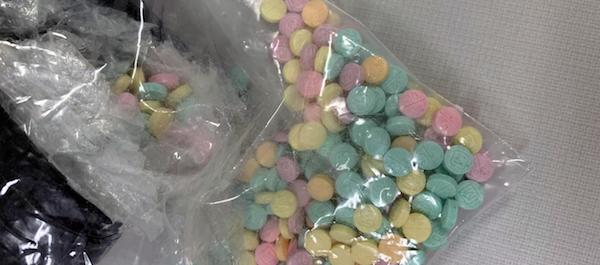
EAST NEW YORK — Father Ed Mason, pastor of Mary, Mother of the Church Parish, was so concerned about the possibility of fentanyl-related drug overdoses hitting East New York that he took an extraordinary step in 2018 — he went through a training session to learn how to recognize an overdose and how to administer the antidote Naloxone.
“I thought that if this is the situation we’re going to be facing, we should be prepared. So I did the training and had our youth ministry do it,” Father Mason recalled.
His concerns from four years ago appear to have been well founded.
Every three hours, someone dies of a drug overdose in New York City, and fentanyl is a factor in 81% of all those overdoses. In just a three month-span in 2021 (July-August-September), there were 709 overdose deaths, according to the most-recent Department of Health statistics.
Two recent drug busts illustrate the depth of the crisis and what law enforcement faces in trying to combat the scourge.
On Oct. 7, agents from the U.S. Drug Enforcement Administration (DEA) arrested two men and confiscated 300,000 so-called “rainbow fentanyl” pills, along with 20 pounds of fentanyl in powder form, in a Bronx apartment.
Most of the pills were sorted by color and contained in large zip-lock bags, and some of the pills were pressed to resemble legitimate oxycodone and Xanax tablets, officials said. The stash had a street value of $6 million, said officials, who announced the bust on Oct. 12.
On Oct. 4, a woman was arrested on Tenth Avenue in Manhattan for allegedly having 15,000 fentanyl pills in her possession.
The fentanyl-laced pills, which are manufactured to look like candy and stored in a LEGO box to avoid detection by law enforcement, were meant to be sold on the streets of New York, authorities said.
The busts are proof that drug traffickers are using deceptive marketing tactics by selling fentanyl-laced pills that look like candy to obscure the potentially fatal dangers the drugs present, according to New York City Special Narcotics Prosecutor Bridget Brennan.
“Fentanyl pills are masquerading in many different forms, and our city is flooded with them,” Brennan said in a statement. “Any street drug, whether it looks like a legitimate pharmaceutical or like candy, may be fentanyl, and it may be lethal.”
Frank Tarentino, special agent in charge of DEA’s New York division, said fentanyl-laced pills are so potent “it only takes two milligrams of fentanyl to be lethal.”
Mayor Eric Adams has labeled the opioid situation an epidemic that “has already taken the lives of thousands of New Yorkers and the pandemic only exacerbated this crisis.”
The statistics on fentanyl use over recent years are staggering. From 2015 to 2020, fentanyl-related overdoses spiked almost 600% and were the leading cause of overdose deaths in the United States. By comparison, heroin and prescription opioid overdoses have declined over the same period. Combined, they accounted for an estimated 25,000 deaths each year, while fentanyl-related overdoses were closing in on 60,000 according to the Centers for Disease Control and Prevention.
Fentanyl is a synthetic opioid, similar to morphine but 100 times more potent. It was invented in 1959 to help manage pain in cancer patients and is now prescribed by doctors to treat patients in severe pain — particularly those who are resistant to other pain-killing medications.
According to a 2020 report from the DEA, most fentanyl is made in either Mexico or China — India is also an emerging producer — and is smuggled into the country over the U.S.-Mexico border. The DEA report also said some fentanyl enters the U.S. by way of China through the Canadian border.
The key to combating the crisis is to educate the public, city officials said.
To that end, New York City Health Commissioner Dr. Ashwin Vasan pointed out in an announcement in April that the city has committed $9 million toward public awareness efforts since 2021.
Those efforts include “Let’s Talk Fentanyl,” a 2021 program in which a direct mailing was sent to all New York City residences warning about the dangers of fentanyl.
The DOH also established a pilot program of “community ambassadors,” people with experience in substance use, who talk to local residents and distribute fentanyl test strips, Naloxone, and educational materials in Harlem and the South Bronx — the two communities with the highest overdose rates in the city.
Father Mason said that while he still keeps an eye out for any signs of drug use in his parish area, he is unaware of any overdose deaths and said he hasn’t had to preside over any funerals involving parishioners dying of drug use.
According to statistics from the DOH, East New York, where Father Mason’s parish is located, is No. 13 on the list of neighborhoods with high rates of drug overdoses in 2018. East Harlem was No. 1. Other neighborhoods within the Diocese of Brooklyn to make the list are the Rockaways (No. 12) and Williamsburg-Bushwick (No. 15).
Despite being in a high-risk neighborhood and having the foresight to seek training, Father Mason said, fortunately, “I’ve never had to use it.”
